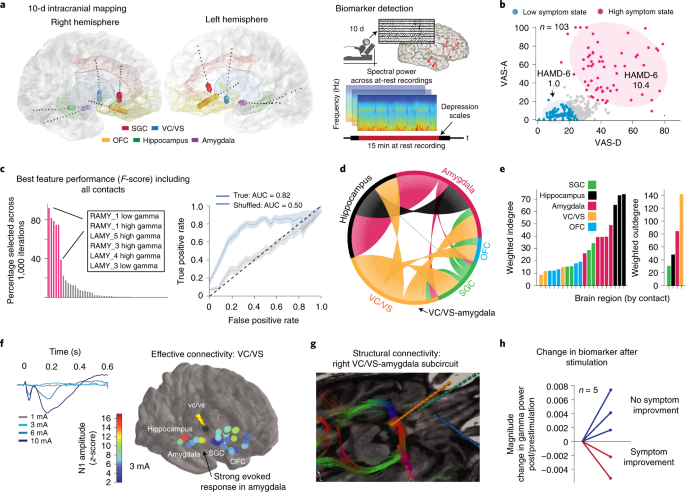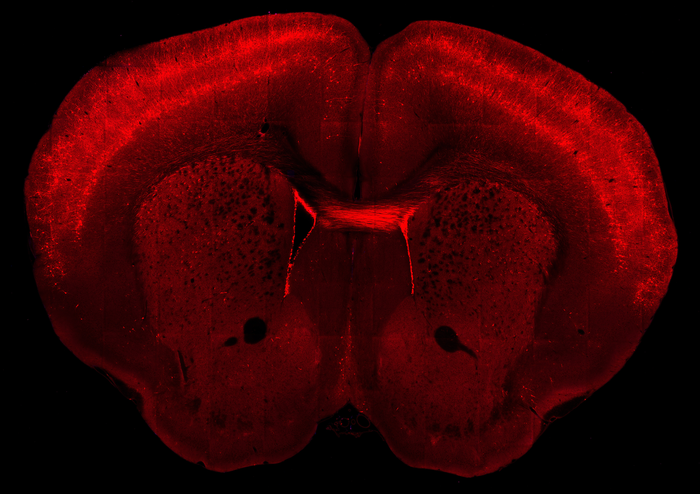Oct
11
2021
 A recent BBC article discusses the emergence of products designed for neurofeedback to aid in stress reduction. The headline asks, “Smart headbands claim to make people calmer. Do they work?” However, the article does not really answer the question, or even get to the heart of the issue. It mostly provide anecdotes and opinions without putting the technology into a clear context. The article focuses mainly on the use of such devices to allegedly improve sports performance.
A recent BBC article discusses the emergence of products designed for neurofeedback to aid in stress reduction. The headline asks, “Smart headbands claim to make people calmer. Do they work?” However, the article does not really answer the question, or even get to the heart of the issue. It mostly provide anecdotes and opinions without putting the technology into a clear context. The article focuses mainly on the use of such devices to allegedly improve sports performance.
There are a few premises on which the claims made for such devices are based, varying from well established to questionable. One premise is that we can measure “stress” in the brain using an electroencephalograph (EEG) to measure the electrical activity in the brain. This claim is mostly true, but there is some important background necessary to understand what this means. First, we need to define “stress”. Functionally when researchers are talking about mental stress they mean one of two things, either the stress that results from an immediate physical threat, or the mental stress that results from engaging in a challenging mental task (like doing math in your head while being distracted). For practical purposes the research on EEGs and mental stress use the challenging mental task model.
It his, however, a good representation of stress generally? It is a convenient research paradigm, but how generalizable it is to mental stress is questionable. It can result in objective measures of physiological stress, such as secretion of stress hormones, which is partly why it’s convenient for research and not unreasonable, but it is only a representation of mental stress and might not translate to all “stressful” situations (like sports).
Can EEGs measure this type of mental stress? Yes – a relaxed mind with eyes closed produces a lot of regular alpha waves. A more active mind (and one with eyes open) produces more theta waves and chaotic brainwave activity. EEGs can therefore tell the difference between relaxed and active. How about not just active but stressed? That is trickier, but there are studies which appear to show some statistical differences in the wave patterns regionally with mental stress. So the premise that EEGs can measure certain kinds of mental stress is reasonable, but not as simple as often implied. This also does not necessarily mean that commercial devices claiming to measure EEG markers of stress work.
Continue Reading »
Oct
08
2021
 A new study published in Nature looks at a closed loop implanted deep brain stimulator to treat severe and treatment resistant depression, with very encouraging results. This is a report of a single patient, with is a useful proof of concept.
A new study published in Nature looks at a closed loop implanted deep brain stimulator to treat severe and treatment resistant depression, with very encouraging results. This is a report of a single patient, with is a useful proof of concept.
Severe depression can profoundly limit one’s life, and increase risk for suicide (affecting 300 million people worldwide and causing most of the 800,000 annual suicides). Depression, like many mental disorders, is very heterogenous, and is therefore not likely to be one specific disorder but a class of disorders with a variety of neurological causes. It also exists on a spectrum of severity, and it’s very likely that mild to moderate depression is phenomenologically different from severe depression. Severe depression can also be in some cases very treatment resistant, which simply means our current treatment options are probably not addressing the actual brain function that is causing the severe depression. We clearly need more options.
The pharmacological approach to severe depression has been very successful, but still not effective in all patients. For “major” depression, which is severe enough to impact a person’s daily life, pharmacological therapy and talk therapy (such as CBT – cognitive behaviorial therapy) seem to be equally effective. But again, these are statistical comparisons. Treatment needs to be individualized.
Continue Reading »
Oct
07
2021
 By now, especially if you are a regular reader here, you have probably heard of the connectome project, an attempt to entirely map the cells and connections of the human brain. This goal is actually comprised of multiple initiatives, one of which is the Brain Research Through Advancing Innovative Neurotechnologies (BRAIN) funded by the NIH. They have now published in Nature their first major result – a map of the mammalian primary motor cortex (technically a “multimodal cell census and atlas of the mammalian primary motor cortex”).
By now, especially if you are a regular reader here, you have probably heard of the connectome project, an attempt to entirely map the cells and connections of the human brain. This goal is actually comprised of multiple initiatives, one of which is the Brain Research Through Advancing Innovative Neurotechnologies (BRAIN) funded by the NIH. They have now published in Nature their first major result – a map of the mammalian primary motor cortex (technically a “multimodal cell census and atlas of the mammalian primary motor cortex”).
The goal of this initiative is to break the brain down into its constituent parts and then see how they all fit together. This begins with knowing all the different brain cell types, and this is part of the string of publications they have produced. The brain contains about 160 billion cells, with 87 billion neurons and the rest astrocytes (which provide supporting and modulating functions). There are many different kinds of neurons, with significant functional differences. Neurons differ in their structure and their chemistry.
The basic structure of a neuron is a cell body with dendrites (hair-like projections) for incoming signals and axons (longer projections) for outgoing signals. But the shape, number, and arrangement of dendrites and axons can vary considerably, and reflect their function, which relates to the pattern of connections the neuron makes. Neurons also differ in terms of their biochemistry – which neurotransmitters do they make, and which neurontransmitter receptors they have. Some neurotransmitters like glutamate are activating (make neurons fire faster) and others like GABA are inhibitory (make them fire slower or not at all).
Continue Reading »
Oct
05
2021
 Syukuro Manabe, Klaus Hasselmann, and Giorgio Parisi share this year’s Nobel Prize in Physics for their work increasing our understanding of how complex systems work. This is a powerful tool for understanding the world, which reminds me of previous advances in our understanding of how gases behave.
Syukuro Manabe, Klaus Hasselmann, and Giorgio Parisi share this year’s Nobel Prize in Physics for their work increasing our understanding of how complex systems work. This is a powerful tool for understanding the world, which reminds me of previous advances in our understanding of how gases behave.
Gases are a phase of matter in which high energy particles are bouncing around at random. It would be impossible to predict the pathway of any individual gas molecule. However, collectively all of this random complexity follows very predictable laws. Similarly, weather is a very complex system. We can predict weather that is about to happen, but beyond a few days it becomes increasingly difficult. The system is simply too chaotic. However, climate (long term weather trends) follows theoretically predictable patterns. The trick is to see the hidden patterns in the chaos, and that is the work that these three physicists did.
Manabe and Hasselmann share half the prize for their work on climate models:
Syukuro Manabe demonstrated how increased levels of carbon dioxide in the atmosphere lead to increased temperatures at the surface of the Earth. In the 1960s, he led the development of physical models of the Earth’s climate and was the first person to explore the interaction between radiation balance and the vertical transport of air masses. His work laid the foundation for the development of current climate models.
About ten years later, Klaus Hasselmann created a model that links together weather and climate, thus answering the question of why climate models can be reliable despite weather being changeable and chaotic. He also developed methods for identifying specific signals, fingerprints, that both natural phenomena and human activities imprint in the climate. His methods have been used to prove that the increased temperature in the atmosphere is due to human emissions of carbon dioxide.
Continue Reading »
Oct
04
2021
 Quantum computing is an exciting technology with tremendous potential. However, at present that is exactly what it remains – a potential, without any current application. It’s actually a great example of the challenges of trying to predict the future. If quantum computing succeeds, the implications could be enormous. But at present, there is no guarantee that quantum computing will become a reality, and if so how long it will take. So if we try to imagine the world 50 or 100 years in the future, quantum computing is a huge variable we can’t really predict at this point.
Quantum computing is an exciting technology with tremendous potential. However, at present that is exactly what it remains – a potential, without any current application. It’s actually a great example of the challenges of trying to predict the future. If quantum computing succeeds, the implications could be enormous. But at present, there is no guarantee that quantum computing will become a reality, and if so how long it will take. So if we try to imagine the world 50 or 100 years in the future, quantum computing is a huge variable we can’t really predict at this point.
The technology is moving forward, but significant hurdles remain. I suspect that for the next 2-3 decades the “coming quantum computer revolution” will be similar to the “coming hydrogen economy,” in that it never came. But the technology continues to progress, and it might come yet.
What is quantum computing? Here is the quick version – a quantum computer exploits the weird properties of quantum mechanics to perform computing operations. Instead of classical “bits” where a unit of information is either a “1” or “0”, a quantum bit (or qubit) is in a state of quantum superposition, and can have any value between 0 and 1 inclusive. This means that each qubit contains a vastly greater amount of information than a classical bit, especially as they scale up in number. A theoretical quantum computer with one million qubits could perform operations in minutes that would take a universe full of classical supercomputers billions of years to perform (in other words, operations that are essentially impossible for classical computers). It’s no wonder that IBM, Google, China, and others are investing heavily in this technology.
But there are significant technological hurdles that remain. Quantum computer operations leverage quantum entanglement (where the physical properties of two particles are linked) among the qubits in order to get to the desired answer, but that answer is only probabilistic. In order to know that the quantum computer is working at all, researchers check the answers with a classical computer. Current quantum computers are running at about a 1% error rate. That sounds low, but for a computer it’s huge, essentially rendering the computer useless for any large calculations (the ones that quantum computers would be useful for).
Continue Reading »
Oct
01
2021
 There is pretty broad agreement that the pandemic was a net negative for learning among children. Schools are an obvious breeding ground for viruses, with hundreds or thousands of students crammed into the same building, moving to different groups in different classes, and with teachers being systematically exposed to many different students while they spray them with their possibly virus-laden droplets. Wearing masks, social distancing, and using plexiglass barriers reduces the spread, but not enough if we are in the middle of a pandemic surge. Only vaccines will make schools truly safe.
There is pretty broad agreement that the pandemic was a net negative for learning among children. Schools are an obvious breeding ground for viruses, with hundreds or thousands of students crammed into the same building, moving to different groups in different classes, and with teachers being systematically exposed to many different students while they spray them with their possibly virus-laden droplets. Wearing masks, social distancing, and using plexiglass barriers reduces the spread, but not enough if we are in the middle of a pandemic surge. Only vaccines will make schools truly safe.
So it was reasonable, especially in the early days of the pandemic, to convert schooling to online classes until the pandemic was under control. The problem was – most schools were simply not ready for this transition. The worst problem were those student who did not have access to a computer and the internet from home. The pandemic helped expose and exacerbate the digital divide. But even for students with good access, the experience was generally not good. Many teachers were not prepared to adapt their classes for online learning. Many parents did not have ability to stay at home with their kids to monitor them. And many children were simply bored and not learning.
This is a classic infrastructure problem. Many technologies do not function well in a vacuum. You can’t have cars without roads, traffic control, licensing, safety regulations, and fueling stations. Mass online learning also requires significant infrastructure that we simply didn’t have.
Continue Reading »
 A recent BBC article discusses the emergence of products designed for neurofeedback to aid in stress reduction. The headline asks, “Smart headbands claim to make people calmer. Do they work?” However, the article does not really answer the question, or even get to the heart of the issue. It mostly provide anecdotes and opinions without putting the technology into a clear context. The article focuses mainly on the use of such devices to allegedly improve sports performance.
A recent BBC article discusses the emergence of products designed for neurofeedback to aid in stress reduction. The headline asks, “Smart headbands claim to make people calmer. Do they work?” However, the article does not really answer the question, or even get to the heart of the issue. It mostly provide anecdotes and opinions without putting the technology into a clear context. The article focuses mainly on the use of such devices to allegedly improve sports performance.
 A
A  By now, especially if you are a regular reader here, you have probably heard of the connectome project, an attempt to entirely map the cells and connections of the human brain. This goal is actually comprised of multiple initiatives, one of which is the Brain Research Through Advancing Innovative Neurotechnologies (BRAIN) funded by the NIH. They have now
By now, especially if you are a regular reader here, you have probably heard of the connectome project, an attempt to entirely map the cells and connections of the human brain. This goal is actually comprised of multiple initiatives, one of which is the Brain Research Through Advancing Innovative Neurotechnologies (BRAIN) funded by the NIH. They have now  Syukuro Manabe, Klaus Hasselmann, and Giorgio Parisi share
Syukuro Manabe, Klaus Hasselmann, and Giorgio Parisi share  Quantum computing is an exciting technology with tremendous potential. However, at present that is exactly what it remains – a potential, without any current application. It’s actually a great example of the challenges of trying to predict the future. If quantum computing succeeds, the implications could be enormous. But at present, there is no guarantee that quantum computing will become a reality, and if so how long it will take. So if we try to imagine the world 50 or 100 years in the future, quantum computing is a huge variable we can’t really predict at this point.
Quantum computing is an exciting technology with tremendous potential. However, at present that is exactly what it remains – a potential, without any current application. It’s actually a great example of the challenges of trying to predict the future. If quantum computing succeeds, the implications could be enormous. But at present, there is no guarantee that quantum computing will become a reality, and if so how long it will take. So if we try to imagine the world 50 or 100 years in the future, quantum computing is a huge variable we can’t really predict at this point. There is pretty broad agreement that the pandemic was a net negative for learning among children. Schools are an obvious breeding ground for viruses, with hundreds or thousands of students crammed into the same building, moving to different groups in different classes, and with teachers being systematically exposed to many different students while they spray them with their possibly virus-laden droplets. Wearing masks, social distancing, and using plexiglass barriers reduces the spread, but not enough if we are in the middle of a pandemic surge. Only vaccines will make schools truly safe.
There is pretty broad agreement that the pandemic was a net negative for learning among children. Schools are an obvious breeding ground for viruses, with hundreds or thousands of students crammed into the same building, moving to different groups in different classes, and with teachers being systematically exposed to many different students while they spray them with their possibly virus-laden droplets. Wearing masks, social distancing, and using plexiglass barriers reduces the spread, but not enough if we are in the middle of a pandemic surge. Only vaccines will make schools truly safe.




